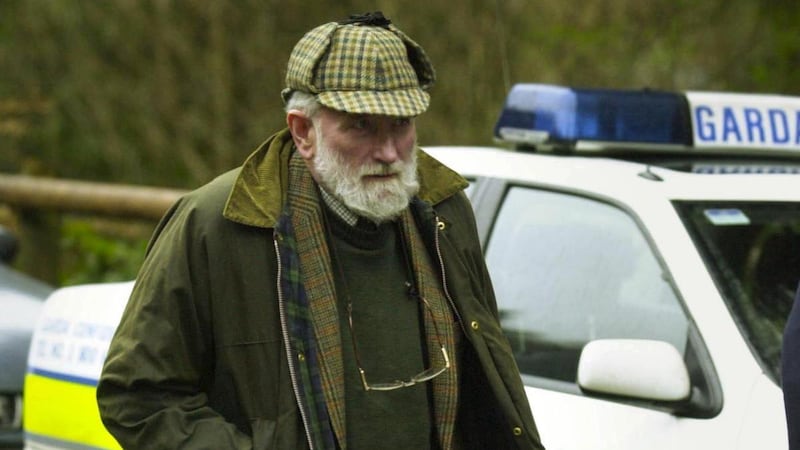The Garda investigation into the murder of Sophie Toscan du Plantier in 1996 remains one of the most controversial in recent history, with criticism of the approach of gardaí being voiced almost from the start.
The badly beaten body of Ms Toscan du Plantier, a 39-year-old mother of one from Paris, was found by the entrance to her holiday home in the isolated townland of Dreenane near Toormore on the Mizen peninsula in west Cork on the morning of December 23rd, 1996.
The film producer’s body was found by her neighbour Shirley Foster, whose husband Alfie Lyons then contacted gardaí, setting in train an investigation that almost three decades later has been the subject of several books, TV documentaries and podcasts as well as countless media reports.

There was a delay of 26 hours before State pathologist Prof John Harbison, who had been celebrating his birthday in Dublin, began his preliminary examination, travelling to west Cork by car rather than helicopter and arriving at the scene on the afternoon of December 24th.
READ MORE
The delay led to calls in the Dáil for the appointment of an assistant State pathologist and the State Pathologist’s Office has since been expanded significantly.
However, it was not the only problem gardaí encountered, according to Garda Technical Bureau member Eugene Gilligan.
Det Garda Gilligan has told the West Cork Podcast that he and his colleagues from the Dublin-based bureau did not get to Schull until 10.30pm on December 23rd, only to discover Schull Garda station was closed. With no mobile phones, he had to rewire a vandalised public phone to get directions from local officers to the scene.
He took photos of the victim at the scene before returning to Schull Garda station to ring Dr Harbison, who instructed him to remove the body to the morgue in Cork city as there was nothing to be gained by a visit to the scene and he could begin the postmortem early the next morning.
But Det Garda Gilligan was overruled by a more senior local officer and so Toscan du Plantier’s body remained at the scene for effectively two nights and while gardaí played down the significance of the delay, others felt it hampered Dr Harbison’s ability to give an exact time of death.
The identification of Ian Bailey as a suspect was also dogged with controversy as witness Marie Farrell, who said she had seen a man she did not know at Kealfadda bridge near Toscan du Plantier’s house, was persuaded by gardaí to round up the man’s height to 6′2″.
Ms Farrell later identified this man to two gardaí on Main Street in Schull, who said he was Ian Bailey, but the manner of the identification led some to question why she was not asked to pick him out in an identity parade so there could be no doubt.
However, one officer involved in the investigation disagrees. “Wasn’t Marie Farrell’s identification of Bailey better than any identity parade – didn’t she pick him out on the street in Schull among a lot of people and point him out to two gardaí – that’s the best identification you can get.”
The same officer, now retired, strongly denies any suggestion that gardaí were overconfident Bailey would make admissions when he was questioned about the killing. “You never know how somebody is going to react when you arrest them, so you assume nothing.”

Is the Sophie Toscan du Plantier case now closed?
In a 2001 review of the case, solicitor for the Director of Public Prosecutions (DPP) Robert Sheehan noted the lack of forensic evidence, queried Farrell’s reliability as a witness and described some investigative practices in the case as “clearly unsafe” before concluding “a prosecution against Bailey is not warranted by the evidence”.
The discovery of Sheehan’s review by Bailey and his legal team when fighting an extradition request from France led the English journalist to make a complaint to the Garda Síochána Ombudsman Commission (Gsoc) in 2012, alleging gardaí had tried to frame him for the murder.
In 2018, Gsoc published a report which said it had found no evidence to support claims by Bailey, his partner Jules Thomas and Farrell that gardaí had deliberated falsified evidence to incriminate Bailey.
“There is no evidence to suggest that Ian Bailey was ‘framed’ for the murder or that evidence was falsified, forged or fabricated by members of An Garda Síochána,” said Gsoc, which also dismissed Bailey’s claim that the Sheehan review supported his allegation of corruption.
In March 2015, a jury at the High Court in Dublin decided after a hearing lasting 64 days to unanimously dismiss an action by Bailey in which he claimed gardaí had conspired to implicate him in the murder.
The controversy continues even after Bailey’s death from a heart attack at the weekend with those who champion his innocence pointing to the DPP review while those who believe he was rightly arrested pointing to both the High Court case and the Gsoc report exonerating the gardaí.
- Sign up for push alerts and have the best news, analysis and comment delivered directly to your phone
- Find The Irish Times on WhatsApp and stay up to date
- Our In The News podcast is now published daily – Find the latest episode here











